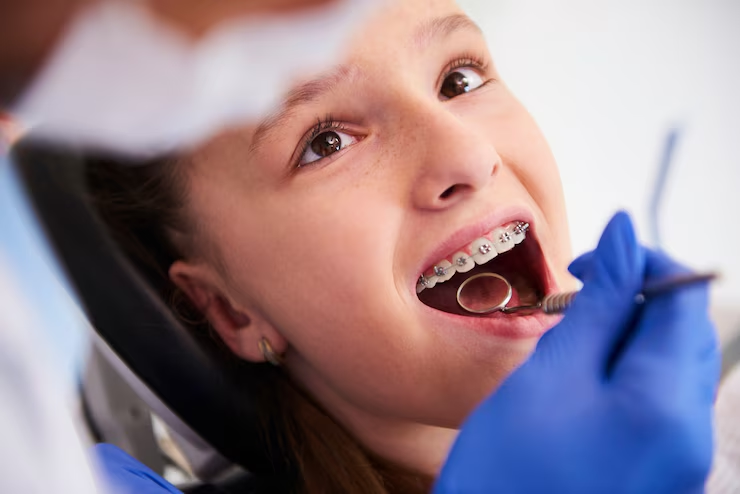Understanding Gingivitis: Early Signs and How to Prevent It
Gum health plays a huge role in maintaining a bright, healthy smile. While cavities often steal the spotlight, gum issues like gingivitis can quietly cause lasting damage if ignored. In this blog, we will break down the basics of gingivitis, highlight the earliest signs, and provide practical prevention tips. What is Gingivitis? Gingivitis is a moderate and common type of gum disease. It happens when the gums become irritated, swollen, or red because of plaque buildup along the gumline. Plaque is a sticky film of bacteria that forms on teeth when proper oral hygiene isn’t followed. How Does Gingivitis Develop? When you skip brushing or flossing, plaque collects on the teeth and gums. Over time, this layer hardens into tartar, which is much tougher to remove. The bacteria in plaque release toxins that irritate the gums, causing inflammation and bleeding. If ignored, gingivitis may grow to periodontitis, an even more serious gum disease that damages bone and causes tooth loss. Key Causes of Gingivitis Early Signs of Gingivitis Detecting gingivitis early provides the best chance of reversing it. Many people are unaware they have gum disease because the symptoms can be mild at first. Common Symptoms to Watch For Healthy gums should be pink and firm. If you notice your gums are red, puffy, or tender, it may signal gingivitis. One of the earliest signs of gingivitis is bleeding gums, especially after brushing or flossing. Even a small amount of blood is a warning sign. Chronic bad breath, also called halitosis, is often caused by bacteria building up in the mouth and on the gums. Gums may begin to pull away from the teeth, making teeth appear longer. Gums affected by gingivitis can look glossy or feel softer than normal. How to Prevent Gingivitis Preventing gingivitis is easier than treating advanced gum disease. A few simple steps can keep your gums healthy and lower your risk. Daily Oral Hygiene Habits Brush Properly Twice a Day Use a soft-bristled toothbrush and fluoride toothpaste. Brush for at least two minutes, reaching every surface of each tooth. Don’t Skip Flossing Every day, floss to get rid of plaque and food stuck between your teeth and under your gums. Flossing is key for cleaning areas your toothbrush can’t reach. Rinse with Mouthwash An antibacterial mouthwash can help kill germs left behind after brushing and flossing. Look for a mouthwash that carries the ADA Seal of Approval. Healthy Lifestyle Choices Eat a Balanced Diet Foods rich in vitamin C and calcium help support healthy gums and teeth. Fresh fruits, vegetables, and dairy products can keep your mouth in good shape. Avoid Tobacco Smoking or using smokeless tobacco increases your risk for gum disease and can make treatment less effective. Stay Hydrated Saliva washes away food particles and bacteria. Drink lots of water to maintain your mouth hydrated. Regular Dental Visits Visiting your dentist for regular cleanings and checkups is vital. Professional cleaning removes plaque that brushing and flossing alone cannot remove. Your dentist can spot early signs of gingivitis and offer advice or treatment before the problem worsens. Why Early Action Matters Catching and addressing gingivitis early is essential for maintaining long-term oral health. If left untreated, gingivitis can advance to periodontitis. This severe stage involves the destruction of the bone supporting your teeth and can even lead to tooth loss. Early intervention can save you from more complex treatments and preserve your smile. When to See a Dentist If you notice red, swollen, or bleeding gums that don’t improve after a week of good oral hygiene, make an appointment with your dentist. Other reasons to visit include persistent bad breath, gum recession, or tooth sensitivity. The sooner you seek help, the easier it is to reverse gingivitis. Simple Home Remedies to Support Gum Health Alongside daily care and dental visits, a few home remedies may help keep your gums healthy: Remember that these remedies are meant to be used in conjunction with professional dental care. Empower Your Smile: Take Charge Against Gingivitis Gingivitis is an early indication that your gums require attention. The good news is that it can be prevented and even reversed in its earliest stages. Understanding “What is Gingivitis?” and being able to spot its early warning signs will help you take care of your oral health. Brush and floss daily, eat a well-balanced diet, avoid tobacco use, and visit your dentist on a regular basis. These simple habits go a long way toward preventing gum disease and keeping your smile bright for years to come.



